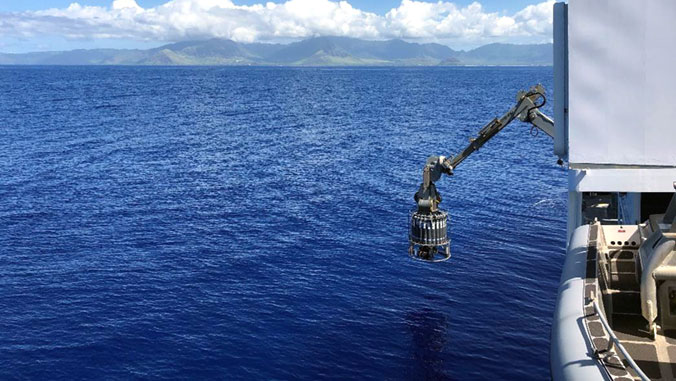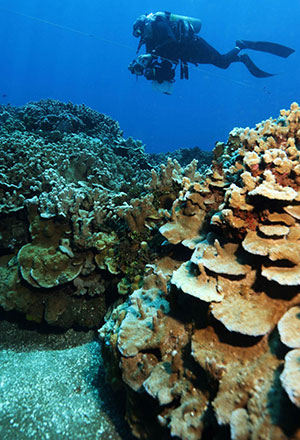
The National Oceanic and Atmospheric Administration announced today it has selected the University of Hawaiʻi to host NOAA’s Cooperative Institute for Marine and Atmospheric Research (CIMAR). The selection comes with an award of up to $210 million throughout the course of five years, with the potential for renewal for another five years based on successful performance.
The mission of CIMAR is to conduct research and disseminate knowledge necessary for understanding and predicting environmental change in the Indo-Pacific region, conserving and managing coastal and marine resources in the Hawaiian islands and U.S.-affiliated Pacific islands, and for meeting the nation’s economic, social and environmental needs in this region.
“This new award, reaffirming a 44-year collaboration between NOAA and UH, is a testament to the excellence of the accomplishments by federal and UH researchers,” said Doug Luther, director of the Joint Institute for Marine and Atmospheric Research (JIMAR) in the UH Mānoa School of Ocean and Earth Science and Technology, NOAA’s previous cooperative institute hosted by UH. “It provides the resources for CIMAR to advance in the tropical Pacific NOAA’s concept of healthy oceans, ecosystems, communities and economies that are resilient in the face of environmental change.”

After an open, competitive evaluation, NOAA selected UH as the home for the new CIMAR. The funding more than doubles the available money that JIMAR received from NOAA.
“We are pleased to announce that the University of Hawaiʻi will host our new Cooperative Institute for Marine and Atmospheric Research,” said Craig McLean, assistant NOAA administrator for Oceanic and Atmospheric Research. “This institute will help NOAA achieve our mission to better understand the ocean and atmosphere, which depends on research, data and information to make sound decisions for healthy ecosystems, communities and a strong blue economy.”
The new cooperative institute will continue to address some of the major research themes that have been the focus of JIMAR, as well as expand to include new research areas. The eight research themes include: ecological forecasting; ecosystem monitoring; ecosystem-based management; protection and restoration of resources; oceanographic monitoring and forecasting; climate science and impacts; air-sea interactions; and tsunamis and other long-period ocean waves.
“It’s a strong connection we have to feed that pipeline locally. It provides experiential, hands-on, all of those great things—experiences for students,” said Tia Brown, deputy director of NOAA’s Pacific Islands Fisheries Science Center. “Postdoctoral, undergraduate or graduate students work directly with NOAA scientists, which is an invaluable piece of how we work in the community and how we grow the science-based community here.”
“Pacific island communities face daunting challenges and unique opportunities in achieving a sustainable and prosperous future as the environment and regional economies continue to change,” said Luther. “NOAA‘s support is critical for attaining this future.”
NOAA supports 20 cooperative institutes consisting of 70 universities and research institutions in 28 states and the District of Columbia. These research institutions provide strong educational programs that promote student and postdoctoral scientist involvement in NOAA-funded research.
–By Marcie Grabowski

